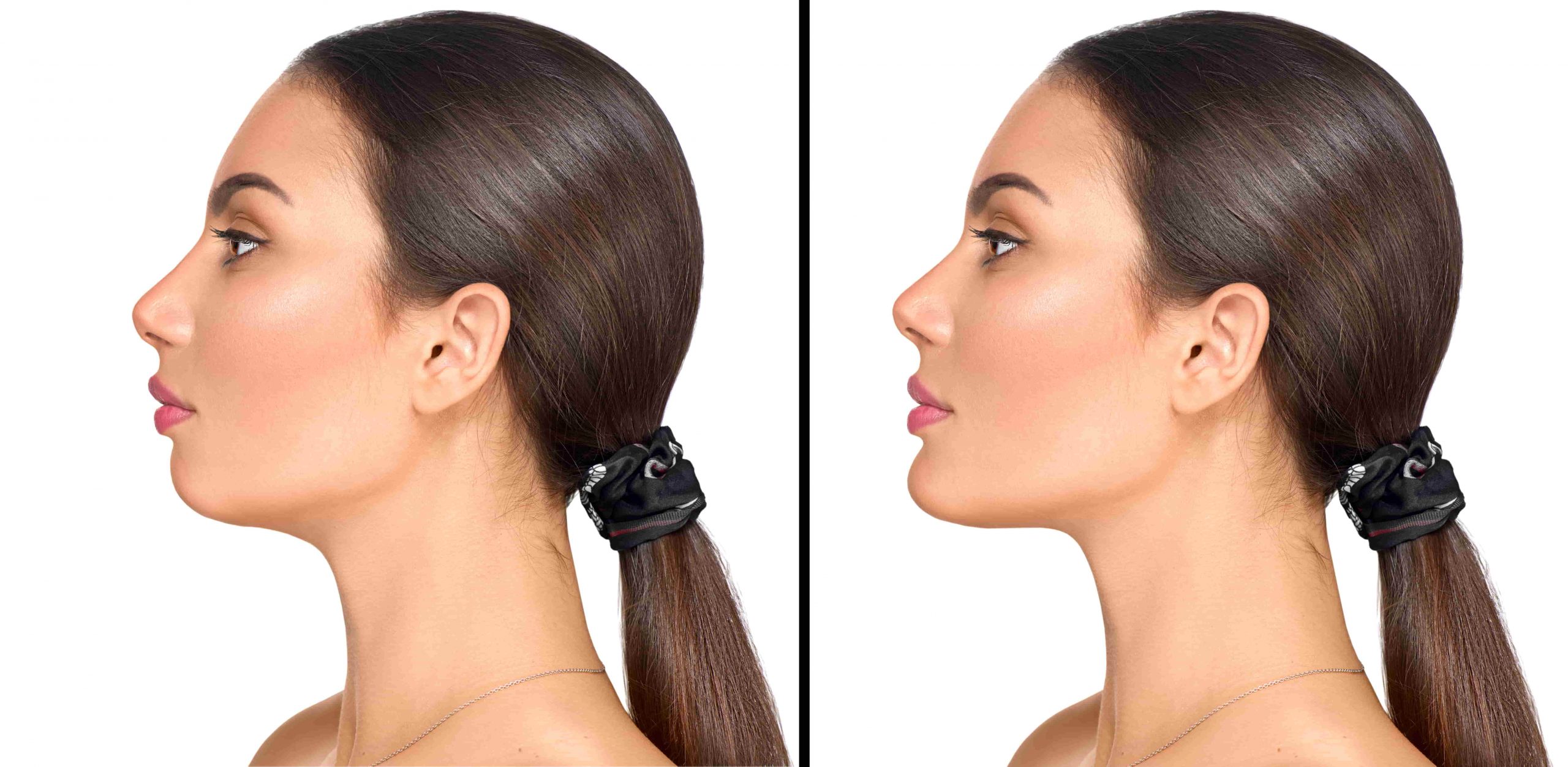The concept of a wide chin male has become increasingly prominent in discussions about facial aesthetics, attractiveness, and masculinity. A wide chin is often associated with strength, confidence, and leadership qualities. However, the perception of a wide chin varies across cultures and contexts, making it an intriguing topic to explore. In this article, we will delve into the anatomy, psychology, and cultural significance of a wide chin in males.
Facial features play a crucial role in shaping our perception of beauty and masculinity. Among these features, the chin stands out as one of the most defining traits of male attractiveness. A wide chin, in particular, is often regarded as a sign of robust health, dominance, and virility. Understanding the science behind this perception can provide valuable insights into human behavior and societal norms.
This article aims to explore the multifaceted aspects of a wide chin in males, covering everything from its anatomical structure to its psychological implications. By the end of this discussion, you will gain a comprehensive understanding of why a wide chin is often considered an attractive trait and how it influences social dynamics.
Read also:Haircuts With Lines The Ultimate Guide To Trendy And Edgy Haircuts
Table of Contents
- The Anatomy of a Wide Chin
- Perception of Wide Chins in Males
- Cultural Impact of Wide Chins
- Wide Chin and Masculinity
- The Role of Wide Chins in Attractiveness
- Chin Augmentation Surgery
- Psychological Effects of a Wide Chin
- Historical Context of Wide Chins
- Health Implications of a Wide Chin
- Conclusion and Final Thoughts
The Anatomy of a Wide Chin
A wide chin male is characterized by a prominent and well-defined mandible, which forms the lower part of the face. The chin, or mentum, is the most forward-projecting part of the mandible and plays a significant role in facial symmetry and proportion. In anatomical terms, a wide chin is typically broader and more angular than average, giving the face a strong and commanding appearance.
Key Features of a Wide Chin
- Increased width of the mandible
- Sharp angles and defined edges
- Protrusion that enhances facial balance
Research conducted by the American Academy of Facial Plastic and Reconstructive Surgery highlights that the width and projection of the chin are influenced by genetic factors, bone structure, and hormonal development during puberty. These factors contribute to the diversity of chin shapes observed in males across different populations.
Perception of Wide Chins in Males
The perception of a wide chin male is deeply rooted in evolutionary psychology and societal norms. Studies have shown that humans tend to associate certain facial features with specific personality traits. In the case of a wide chin, it is often linked to qualities such as strength, dominance, and reliability.
Factors Influencing Perception
- Evolutionary preferences for robust physical traits
- Cultural narratives about masculinity and leadership
- Media portrayal of characters with strong chins
For instance, a study published in the journal "Evolution and Human Behavior" found that participants rated individuals with wider chins as more attractive and trustworthy compared to those with narrower chins. This perception is further reinforced by the prevalence of wide-chinned male celebrities and public figures in media.
Cultural Impact of Wide Chins
Cultural factors significantly influence how a wide chin male is perceived in different societies. In Western cultures, a wide chin is often associated with masculinity and authority, as seen in the portrayal of leaders and heroes in films and literature. Conversely, in some Eastern cultures, a more rounded and softer chin may be preferred for its association with gentleness and approachability.
Cultural Variations in Chin Preferences
- Western cultures: Preference for strong, angular chins
- Eastern cultures: Preference for softer, rounded chins
- Global trends: Increasing acceptance of diverse chin shapes
As globalization continues to bridge cultural gaps, the perception of a wide chin is becoming more inclusive, with people recognizing the beauty in various facial structures. This shift reflects a broader acceptance of individuality and diversity in aesthetics.
Read also:Nail Piercing Charms The Ultimate Guide To Elevate Your Style
Wide Chin and Masculinity
The connection between a wide chin and masculinity is well-documented in both scientific literature and popular culture. A wide chin is frequently cited as a hallmark of traditional masculinity, symbolizing traits such as resilience, confidence, and assertiveness. This association is rooted in biological and social factors that shape our understanding of gender roles.
How a Wide Chin Conveys Masculinity
- Biological indicators of testosterone levels
- Social cues for leadership and dominance
- Cultural reinforcement through media and art
A study published in the journal "Psychology of Men and Masculinities" explored the relationship between facial structure and perceived masculinity. The findings revealed that individuals with wider chins were consistently rated higher on masculinity scales, underscoring the importance of this feature in shaping societal perceptions of gender.
The Role of Wide Chins in Attractiveness
Attractiveness is a complex interplay of physical traits, personality, and context. When it comes to facial features, a wide chin male often ranks high on attractiveness scales due to its association with health, strength, and fertility. Evolutionary psychologists argue that humans are naturally drawn to features that signal robust health and genetic fitness.
Factors Contributing to Attractiveness
- Facial symmetry and proportion
- Chin width and projection
- Overall facial harmony
A meta-analysis of studies on facial attractiveness, published in the journal "Personality and Social Psychology Review," concluded that individuals with wider chins were perceived as more attractive, particularly in contexts where dominance and leadership were valued. This finding highlights the importance of a wide chin in shaping perceptions of beauty and desirability.
Chin Augmentation Surgery
For those who desire a wider chin, surgical options such as chin augmentation are available. This procedure involves the use of implants or injectable fillers to enhance the width and projection of the chin. While the results can be transformative, it is essential to consult with a qualified plastic surgeon to ensure safety and satisfaction.
Considerations for Chin Augmentation
- Consultation with a certified surgeon
- Discussion of realistic expectations
- Post-operative care and recovery
According to the American Society of Plastic Surgeons, chin augmentation is among the most popular facial procedures, with thousands of individuals opting for it each year. The demand for this surgery underscores the societal value placed on a strong and well-defined chin.
Psychological Effects of a Wide Chin
Psychologically, a wide chin can have a significant impact on self-perception and social interactions. Individuals with wider chins may feel more confident and empowered due to societal associations with strength and leadership. Conversely, those who perceive their chins as too narrow may experience feelings of inadequacy or insecurity.
Impact on Self-Confidence
- Enhanced sense of self-worth
- Improved social interactions
- Increased career opportunities
A study published in the journal "Self and Identity" explored the psychological effects of facial features on self-esteem. The results indicated that individuals with wider chins reported higher levels of confidence and satisfaction with their appearance, highlighting the importance of this feature in shaping mental well-being.
Historical Context of Wide Chins
The historical significance of a wide chin male can be traced back to ancient civilizations, where facial features were often linked to power and authority. In Greek and Roman art, for example, statues of gods and heroes frequently featured strong, angular chins as symbols of divinity and strength. Similarly, medieval portraits of kings and nobles often emphasized broad chins to convey their dominance and leadership.
Historical Examples of Wide Chins
- Greek statues of Zeus and Apollo
- Portraits of Roman emperors
- Medieval depictions of royalty
This historical context underscores the enduring appeal of a wide chin as a symbol of power and authority, transcending time and culture.
Health Implications of a Wide Chin
While a wide chin is often associated with positive traits, it can also have implications for health and functionality. For instance, an excessively wide or protruding chin may lead to issues such as jaw misalignment, difficulty in chewing, or speech impediments. It is essential to address these concerns through proper medical evaluation and treatment.
Potential Health Concerns
- Jaw misalignment
- Temporomandibular joint disorder (TMJ)
- Speech or swallowing difficulties
A study published in the "Journal of Oral and Maxillofacial Surgery" examined the relationship between chin width and jaw function. The findings suggested that individuals with wider chins were more likely to experience jaw-related issues, emphasizing the need for early intervention and treatment.
Conclusion and Final Thoughts
In conclusion, the concept of a wide chin male encompasses a wide range of anatomical, psychological, and cultural dimensions. From its role in shaping perceptions of masculinity and attractiveness to its historical significance as a symbol of power, a wide chin remains a fascinating topic of study and discussion.
We encourage readers to share their thoughts and experiences in the comments section below. Additionally, feel free to explore other articles on our website for more insights into facial aesthetics and human behavior. Together, let's continue the conversation about the beauty and diversity of human traits.


